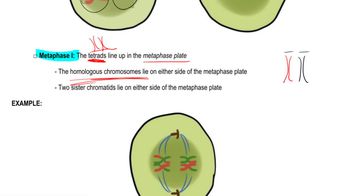A diploid cell contains three pairs of homologous chromosomes designated C1 and C2, M1 and M2, and S1 and S2. No crossing over occurs. What combinations of chromosomes are possible in?
(a) daughter cells following mitosis
(b) cells undergoing the first meiotic metaphase
(c) haploid cells following both divisions of meiosis





